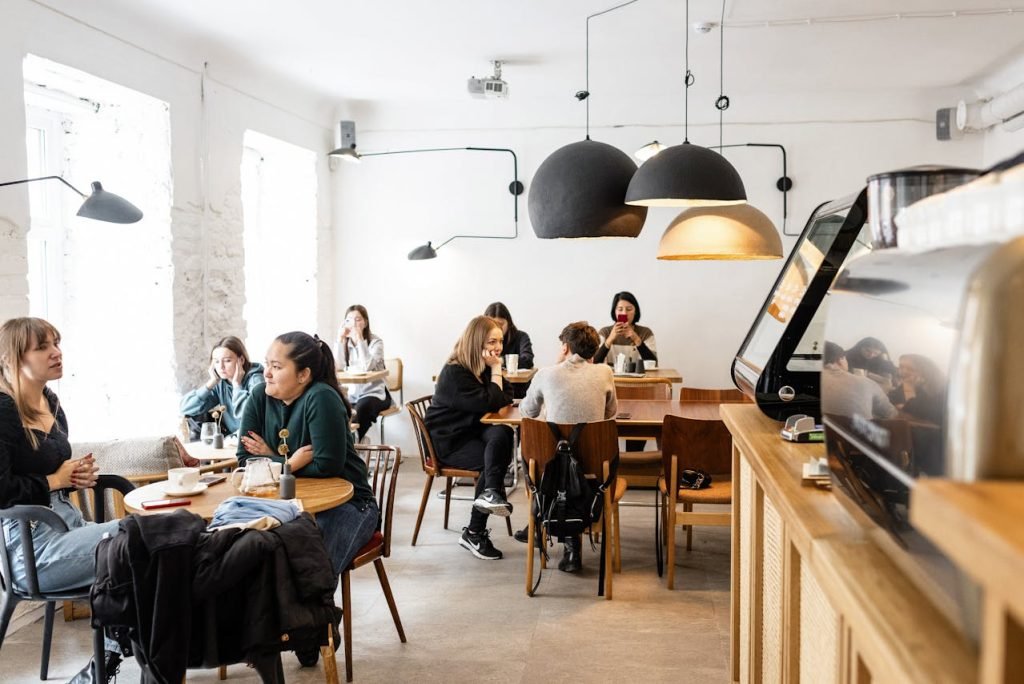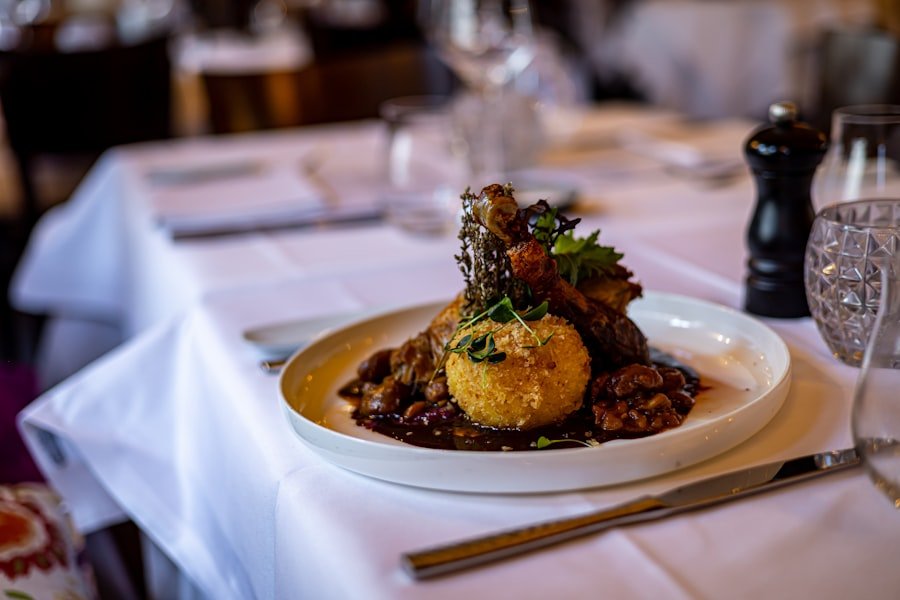

Ordering with Ease: Basic Norwegian Phrases for the Café
Whether you’re visiting the picturesque fjords, exploring the vibrant city of Oslo, or immersing yourself in the rich cultural heritage of the country, knowing a few key phrases can go a long way in making connections with locals and navigating daily interactions.
Learning basic Norwegian phrases is especially important when traveling in Norway because English proficiency varies among the population. While many Norwegians speak English fluently, particularly in urban areas and tourist destinations, there are still some who may have limited English skills. By making an effort to learn and use basic Norwegian phrases, you not only show respect for the local culture but also make it easier to communicate and connect with people you encounter during your travels.
Table of Contents
ToggleGreeting and Ordering Phrases
When visiting Norway, it’s important to start off on the right foot by using common greetings and introductions. “Hei” is the most common way to say hello in Norwegian, and it can be used in both formal and informal settings. If you want to be more formal, you can say “God dag” (good day) or “God kveld” (good evening). When meeting someone for the first time, it’s polite to introduce yourself by saying “Jeg heter…” (My name is…) followed by your name.
When it comes to ordering food or drinks in Norway, there are a few key phrases that can come in handy. To ask for someone’s name, you can say “Hva heter du?” (What is your name?). If you’re at a café or restaurant and want to order something, you can use phrases like “Jeg vil gjerne ha…” (I would like to have…) or “Kan jeg få…” (Can I have…). It’s also useful to know how to say “Takk” (Thank you) and “Vær så god” (You’re welcome) to express gratitude and politeness.
Understanding the Café Menu
Norwegian cuisine is known for its emphasis on fresh, local ingredients and traditional flavors. When dining at a café in Norway, it’s helpful to understand common menu items and how to read a Norwegian menu. Some common Norwegian café menu items include “smørbrød” (open-faced sandwiches), “fiskekaker” (fish cakes), “lapskaus” (meat and vegetable stew), and “vafler” (waffles).
To read a Norwegian menu, it’s important to familiarize yourself with basic vocabulary for ordering food and drinks. Some key words to know include “mat” (food), “drikke” (drink), “forrett” (appetizer), “hovedrett” (main course), “dessert” (dessert), “kaffe” (coffee), and “te” (tea). Additionally, knowing how to say common ingredients like “kjøtt” (meat), “fisk” (fish), “grønnsaker” (vegetables), and “ost” (cheese) can help you navigate the menu more easily.
Asking for Recommendations
One of the joys of traveling is trying new foods and experiencing local cuisine. When visiting a café in Norway, don’t be afraid to ask for recommendations from the café staff. They are often knowledgeable about the menu and can provide insights into popular dishes or specialties.
To ask for recommendations, you can use phrases like “Hva anbefaler du?” (What do you recommend?) or “Hva er spesialiteten deres?” (What is your specialty?). If you have specific preferences or dietary restrictions, it’s helpful to know vocabulary for describing food and drink preferences. For example, you can say “Jeg er vegetarianer” (I am a vegetarian) or “Jeg er allergisk mot…” (I am allergic to…). By communicating your needs clearly, you can ensure that you receive recommendations that suit your tastes and dietary requirements.
Ordering Coffee and Beverages
Norwegians are known for their love of coffee, and ordering a cup of coffee is a common ritual in Norway. To order coffee, you can use phrases like “En kopp kaffe, takk” (A cup of coffee, please) or “En svart kaffe, vær så god” (A black coffee, please). If you prefer tea, you can say “En kopp te, takk” (A cup of tea, please).
One of the great things about ordering beverages in Norway is the ability to customize your order. If you like your coffee with milk, you can say “Med melk” (With milk). If you prefer it black, you can say “Uten melk” (Without milk). Similarly, if you like your tea with sugar, you can say “Med sukker” (With sugar), or if you prefer it without sugar, you can say “Uten sukker” (Without sugar). By knowing these basic phrases and being able to customize your order, you can enjoy your favorite beverages just the way you like them.
Ordering Food and Snacks

In addition to beverages, knowing how to order food and snacks is essential when visiting a café in Norway. Some common Norwegian snacks include “pølse i lompe” (hot dog wrapped in potato flatbread), “lefse” (thin potato pancake), and “kanelbolle” (cinnamon bun).
To order food or snacks, you can use phrases like “Jeg vil gjerne ha…” (I would like to have…) or “Kan jeg få…” (Can I have…). For example, if you want to order a cinnamon bun, you can say “Jeg vil gjerne ha en kanelbolle” (I would like to have a cinnamon bun). If you have any specific preferences or dietary restrictions, it’s important to communicate them clearly. You can say “Jeg er vegetarianer” (I am a vegetarian) or “Jeg er allergisk mot…” (I am allergic to…) to ensure that your order meets your needs.
Making Special Requests
When dining out, it’s not uncommon to have special dietary restrictions or preferences. In Norway, it’s important to know how to make special requests and communicate your needs effectively. Whether you’re vegetarian, vegan, gluten-free, or have any other dietary restrictions, there are ways to navigate the menu and find suitable options.
To make special requests, it’s helpful to know vocabulary for special requests. For example, you can say “Jeg er vegetarianer” (I am a vegetarian), “Jeg spiser ikke gluten” (I don’t eat gluten), or “Jeg er allergisk mot…” (I am allergic to…). By communicating your needs clearly and politely, you can ensure that the café staff understands your requirements and can accommodate them.
Expressing Gratitude and Saying Goodbye
In Norwegian culture, expressing gratitude is important. When someone helps you or provides good service at a café, it’s polite to say thank you. The phrase “Takk” is the most common way to say thank you in Norwegian. You can also use phrases like “Tusen takk” (Thank you very much) or “Mange takk” (Many thanks) to express extra gratitude.
When it’s time to leave the café, it’s important to say goodbye in Norwegian. The most common way to say goodbye is “Ha det bra” (Take care). You can also use phrases like “Vi sees” (See you) or “Adjø” (Goodbye). By using these phrases, you show respect for the local culture and leave a positive impression.
Common Phrases for Small Talk
Small talk is a great way to connect with locals and make new friends while traveling. In Norway, it’s helpful to know some common phrases for small talk. For example, you can ask “Hvordan har du det?” (How are you?) or “Hva heter du?” (What is your name?). You can also use phrases like “Hvor kommer du fra?” (Where are you from?) or “Har du vært her før?” (Have you been here before?) to start a conversation.
When engaging in small talk, it’s important to be respectful and genuine. Norwegians value authenticity and may appreciate a sincere interest in their culture and country. By showing curiosity and asking open-ended questions, you can create meaningful connections with locals and learn more about Norway.
Tips for Ordering with Ease in Norway
To recap, learning basic Norwegian phrases can greatly enhance your travel experience in Norway. By familiarizing yourself with common greetings, ordering phrases, café menu items, and vocabulary for making special requests, you can navigate daily interactions with ease. Here are a few tips to help you order with ease in Norway:
1. Practice your Norwegian: Before your trip, take some time to practice basic Norwegian phrases. You can use language learning apps or online resources to improve your pronunciation and vocabulary.
2. Use the phrases in real-life situations: Once you arrive in Norway, don’t be afraid to use the phrases you’ve learned. Locals appreciate the effort and are often willing to help if you’re struggling with the language.
3. Be patient and polite: If you encounter someone who doesn’t speak English fluently, be patient and try to communicate using basic Norwegian phrases. Remember to always be polite and respectful, even if there is a language barrier.
4. Embrace the cultural experience: Ordering food and drinks in Norway is not just about sustenance; it’s also an opportunity to immerse yourself in the local culture. Take the time to savor traditional Norwegian dishes and engage in conversations with locals to learn more about their culinary traditions.
In conclusion, learning basic Norwegian phrases is essential for travelers visiting Norway. By familiarizing yourself with greetings, ordering phrases, café menu items, and vocabulary for making special requests, you can navigate daily interactions with ease and make meaningful connections with locals. So, don’t be afraid to practice your Norwegian and embrace the cultural experience of ordering food and drinks in Norway.
If you’re interested in expanding your Norwegian vocabulary beyond basic phrases for the café, you might find the article “Using a ’tilhøre’ and ‘å eie’: Verbs of Ownership and Belonging” helpful. This article explores the nuances of these verbs and provides examples to help you better understand their usage. Check it out here.
If you want to learn Norwegian, you can register for classes here. We look forward to hearing from you and helping you become fluent in Norwegian.





